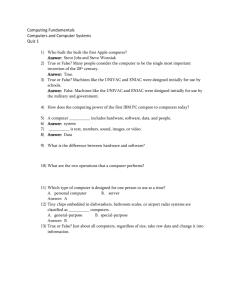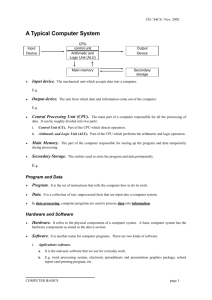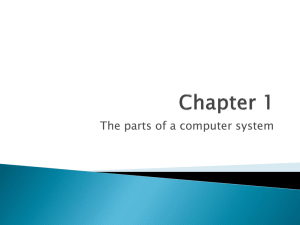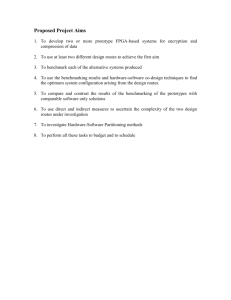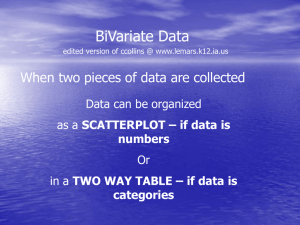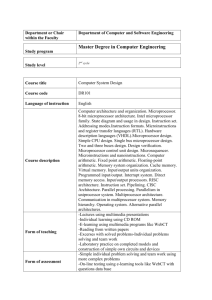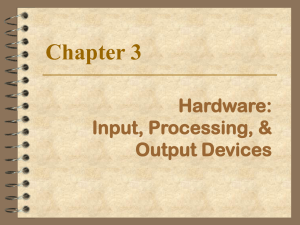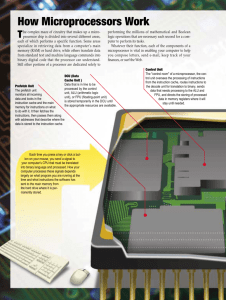here
advertisement
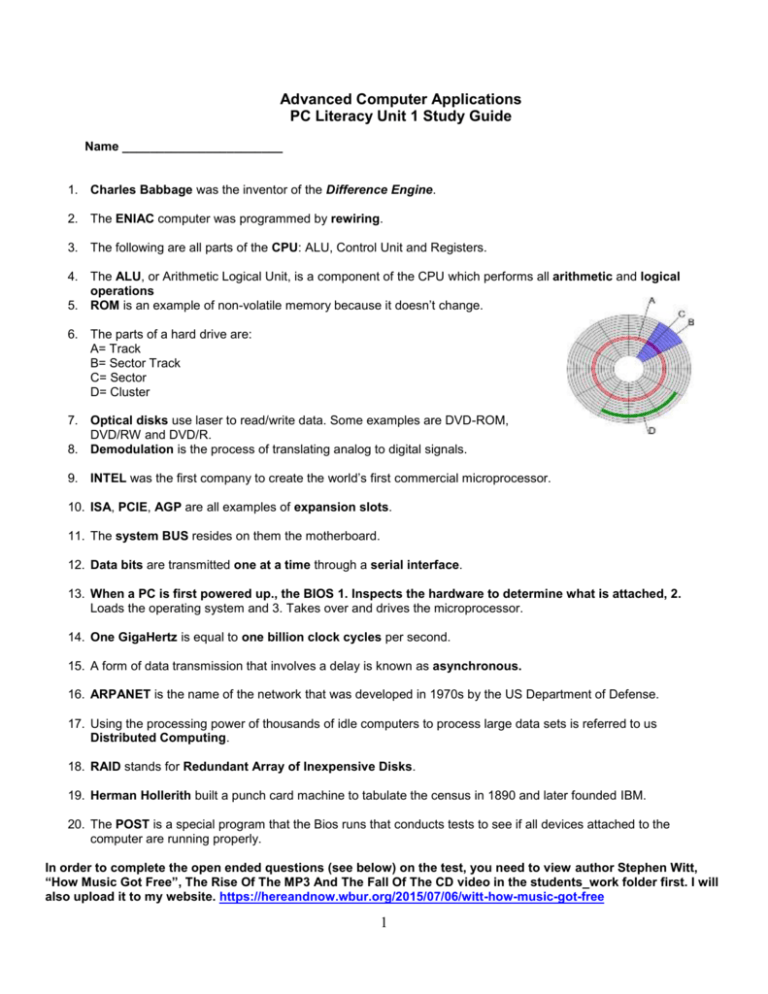
Advanced Computer Applications PC Literacy Unit 1 Study Guide Name _______________________ 1. Charles Babbage was the inventor of the Difference Engine. 2. The ENIAC computer was programmed by rewiring. 3. The following are all parts of the CPU: ALU, Control Unit and Registers. 4. The ALU, or Arithmetic Logical Unit, is a component of the CPU which performs all arithmetic and logical operations 5. ROM is an example of non-volatile memory because it doesn’t change. 6. The parts of a hard drive are: A= Track B= Sector Track C= Sector D= Cluster 7. Optical disks use laser to read/write data. Some examples are DVD-ROM, DVD/RW and DVD/R. 8. Demodulation is the process of translating analog to digital signals. 9. INTEL was the first company to create the world’s first commercial microprocessor. 10. ISA, PCIE, AGP are all examples of expansion slots. 11. The system BUS resides on them the motherboard. 12. Data bits are transmitted one at a time through a serial interface. 13. When a PC is first powered up., the BIOS 1. Inspects the hardware to determine what is attached, 2. Loads the operating system and 3. Takes over and drives the microprocessor. 14. One GigaHertz is equal to one billion clock cycles per second. 15. A form of data transmission that involves a delay is known as asynchronous. 16. ARPANET is the name of the network that was developed in 1970s by the US Department of Defense. 17. Using the processing power of thousands of idle computers to process large data sets is referred to us Distributed Computing. 18. RAID stands for Redundant Array of Inexpensive Disks. 19. Herman Hollerith built a punch card machine to tabulate the census in 1890 and later founded IBM. 20. The POST is a special program that the Bios runs that conducts tests to see if all devices attached to the computer are running properly. In order to complete the open ended questions (see below) on the test, you need to view author Stephen Witt, “How Music Got Free”, The Rise Of The MP3 And The Fall Of The CD video in the students_work folder first. I will also upload it to my website. https://hereandnow.wbur.org/2015/07/06/witt-how-music-got-free 1 OPEN ENDED (20 points): 1. Who invented the MP3 player? When? Why? (5 points) 2. What impact did the invention of the MP3 player have on the music industry? (5 points) 3. What did the music industry consider CD’s? (5 points) 4. What does the future hold for MP3 format and the music industry? (5 points) You may use Word to type your responses. Print and attach your document to this test. Please make sure your name is on the top of the Word document and use Times New Roman, 12 point font and double space. You must have 4 complete paragraphs. 2 3

